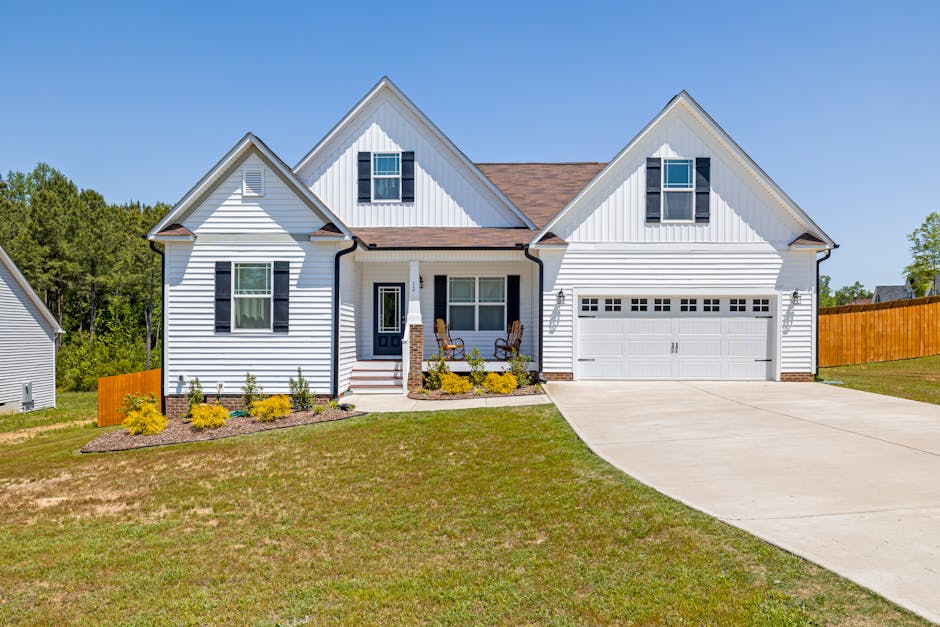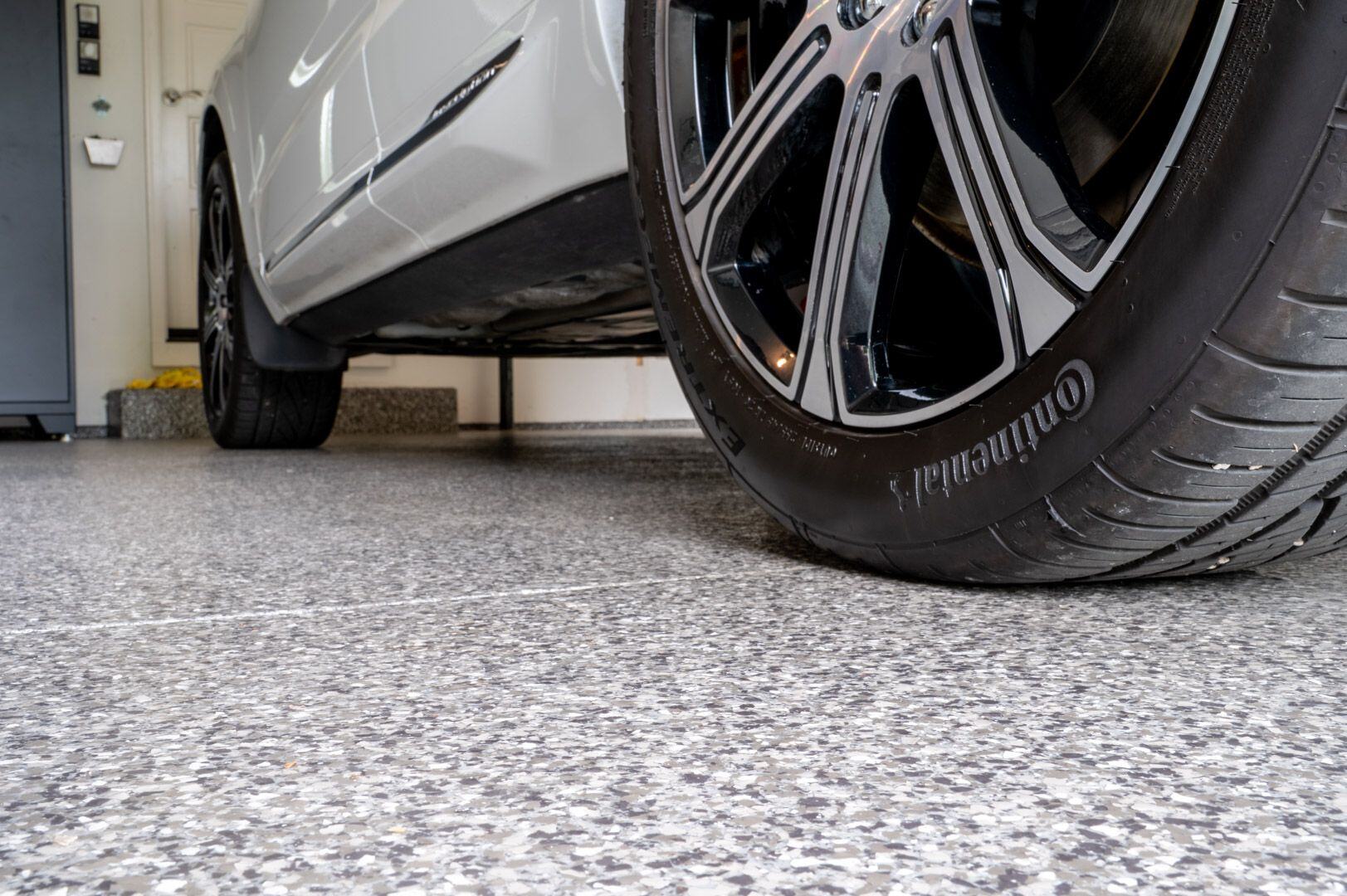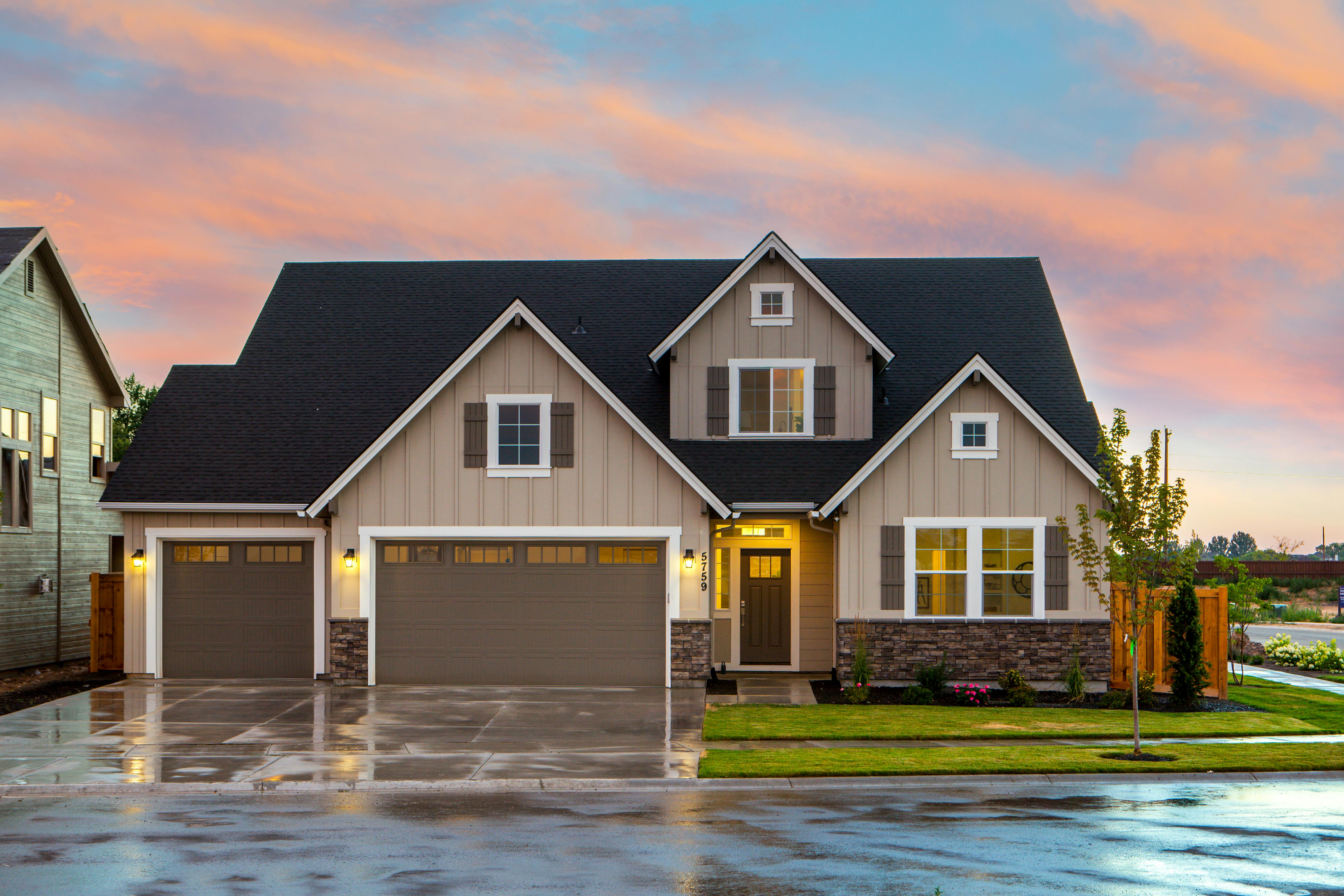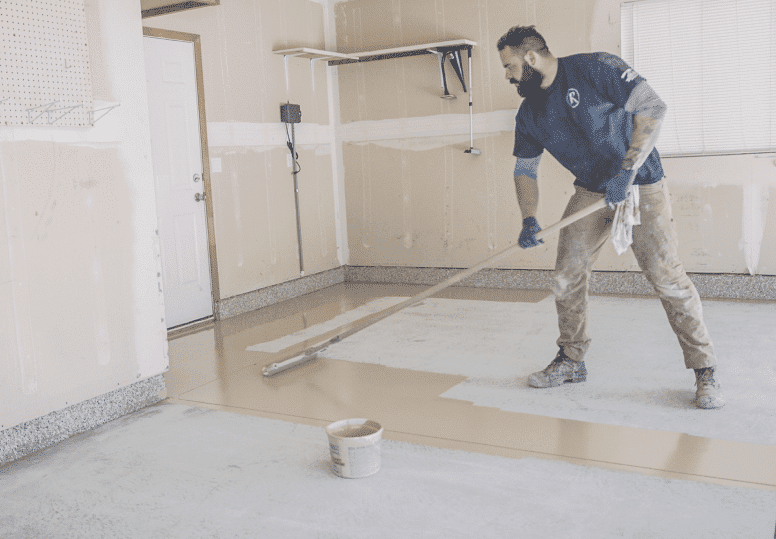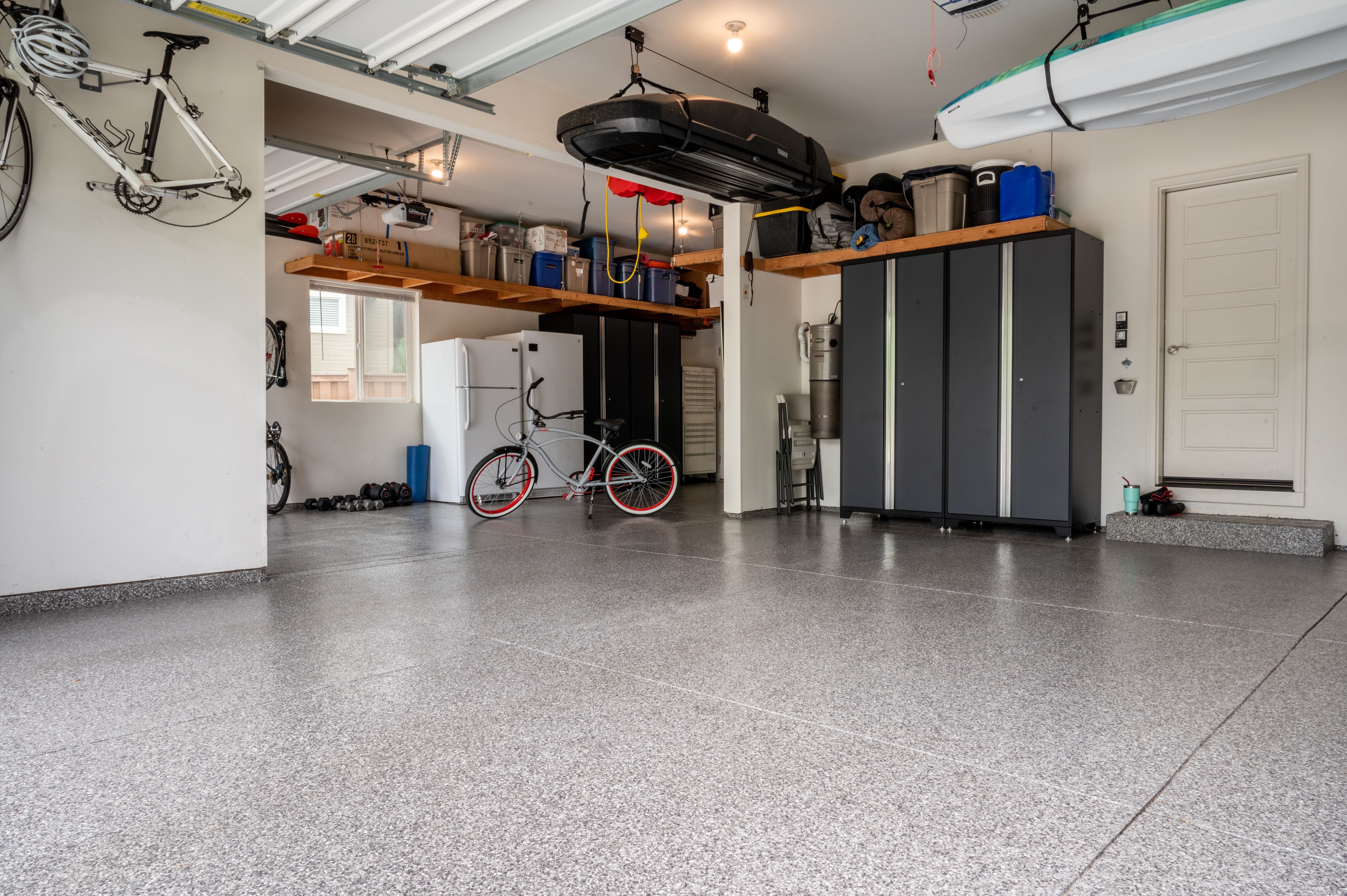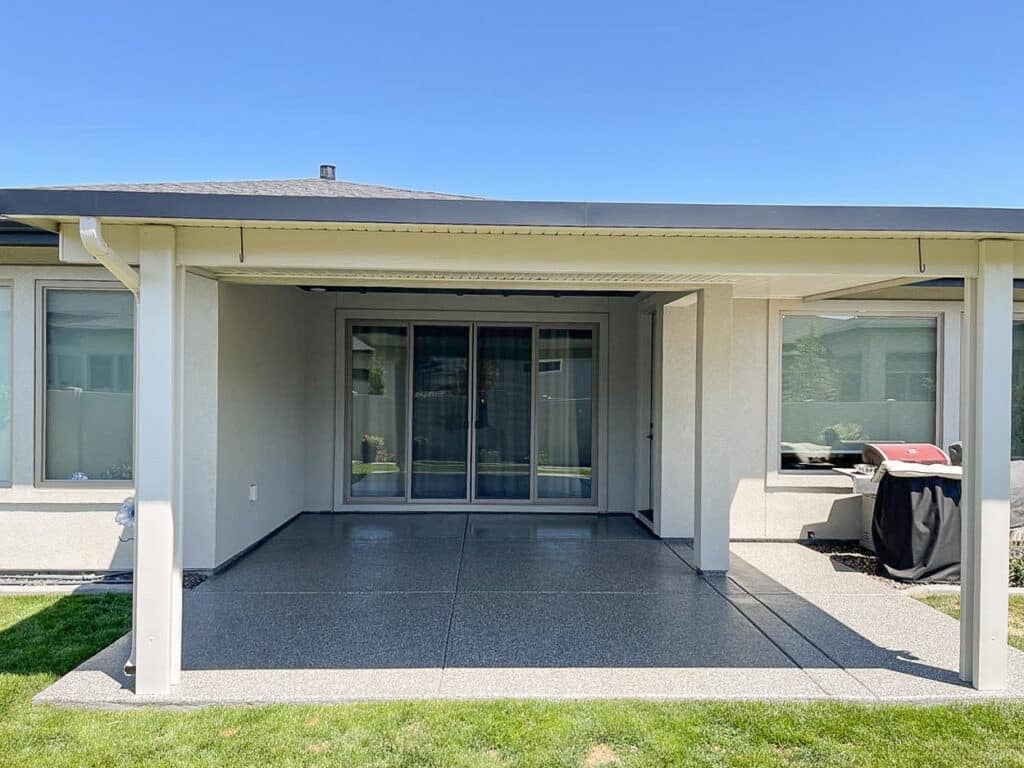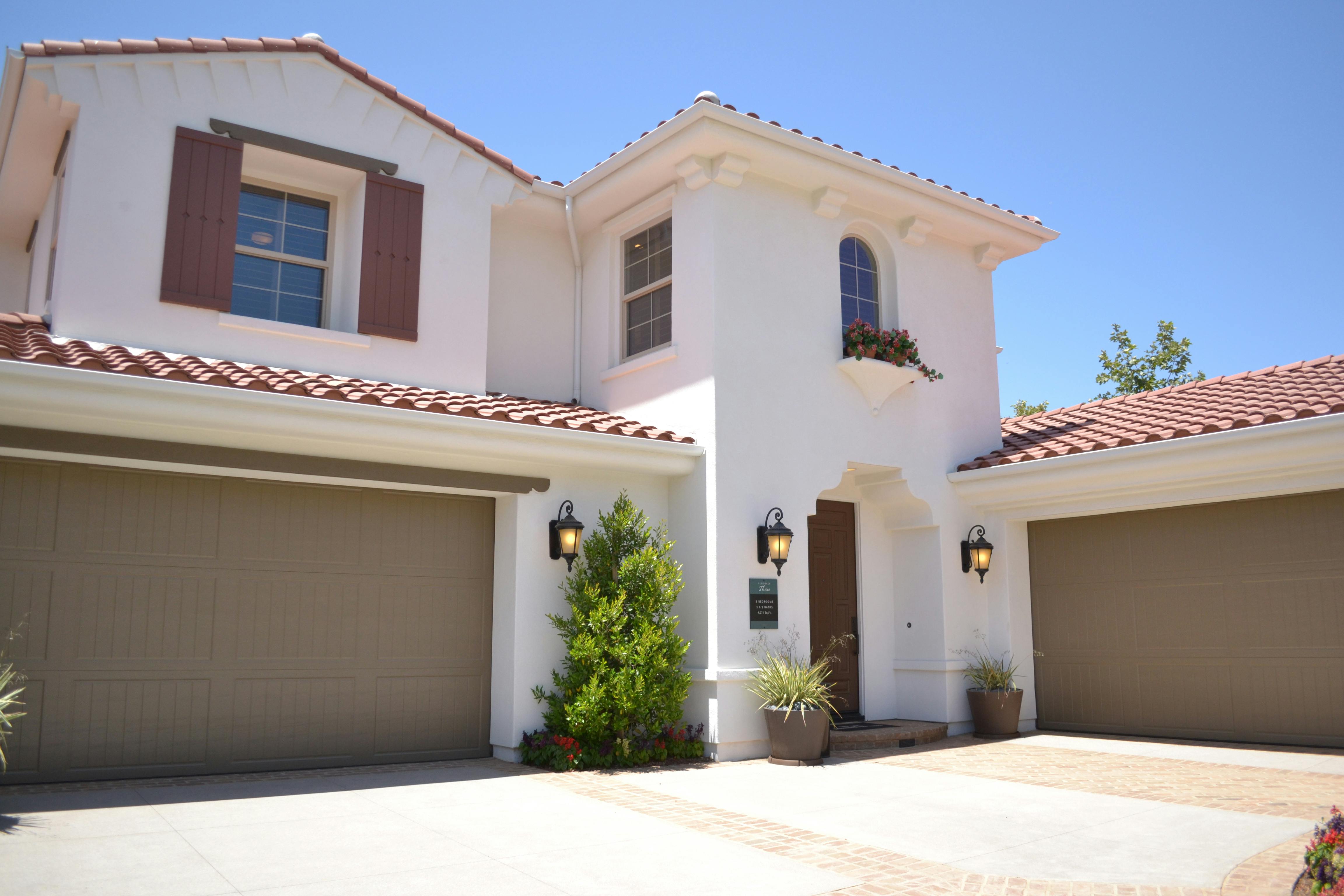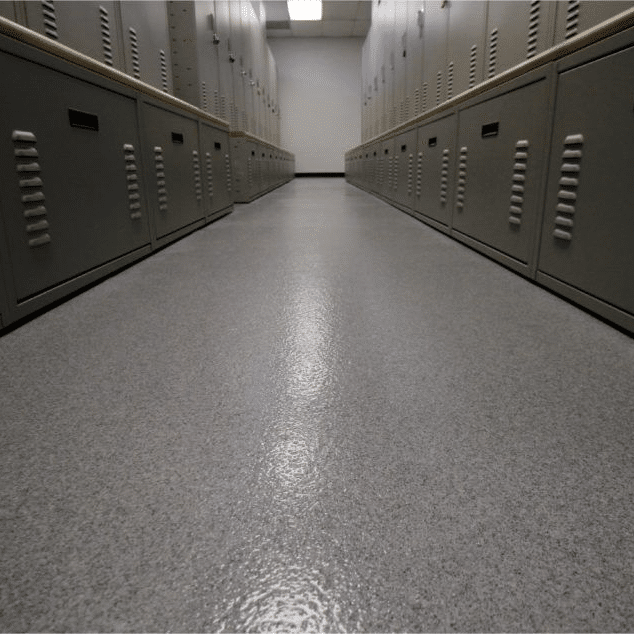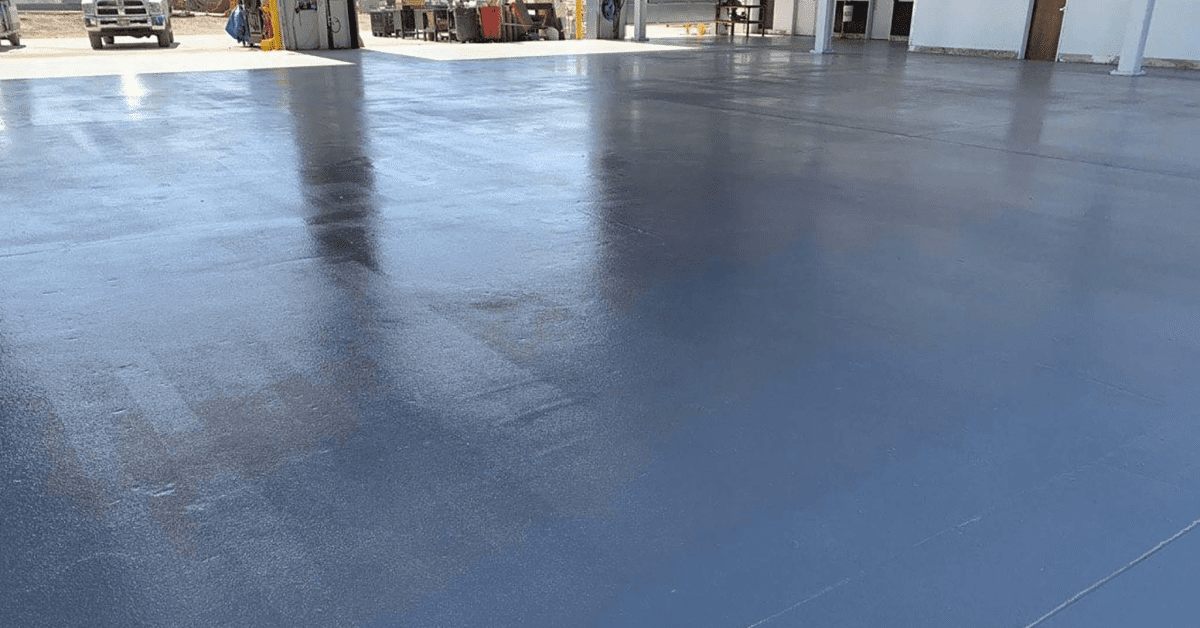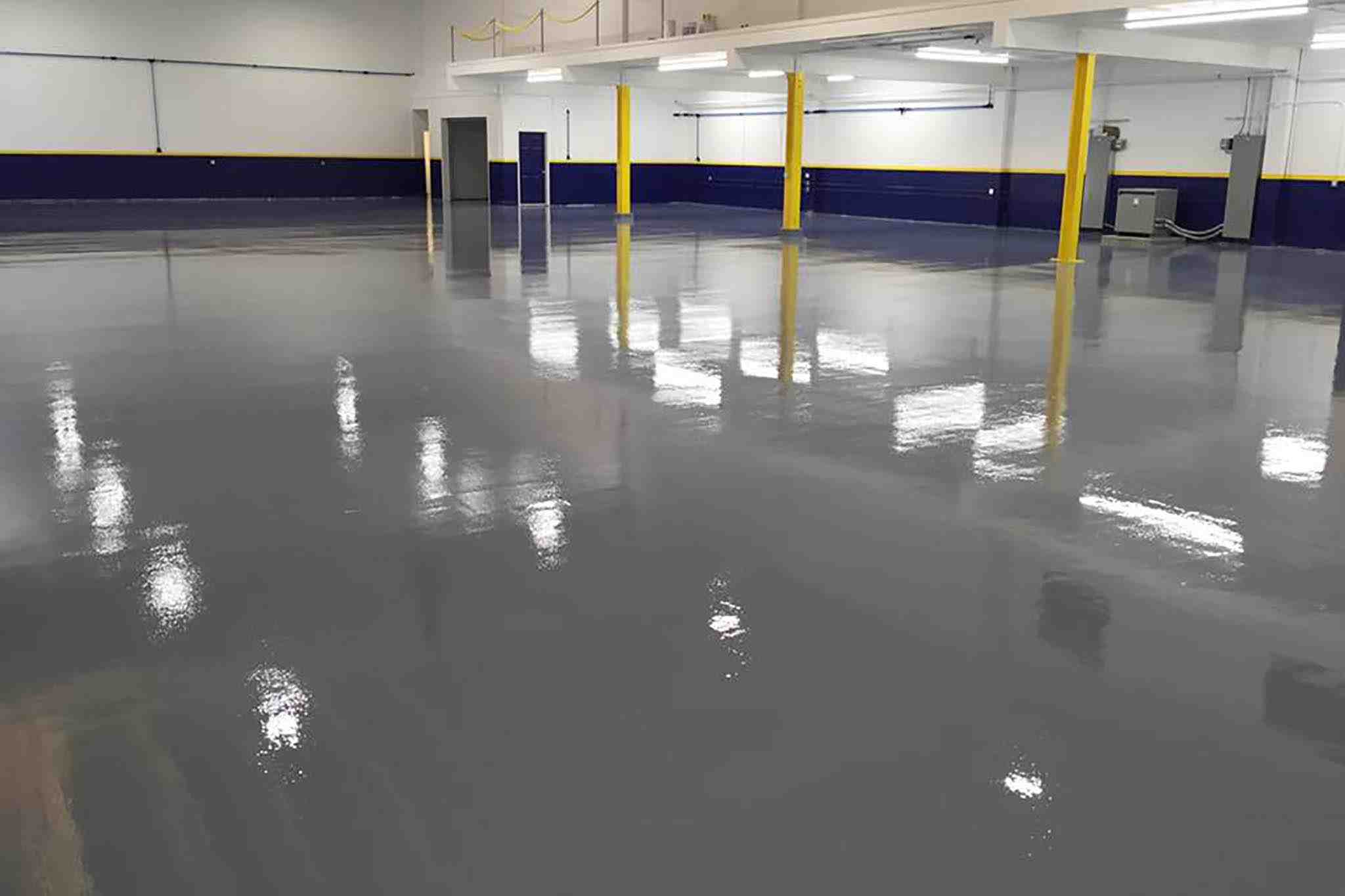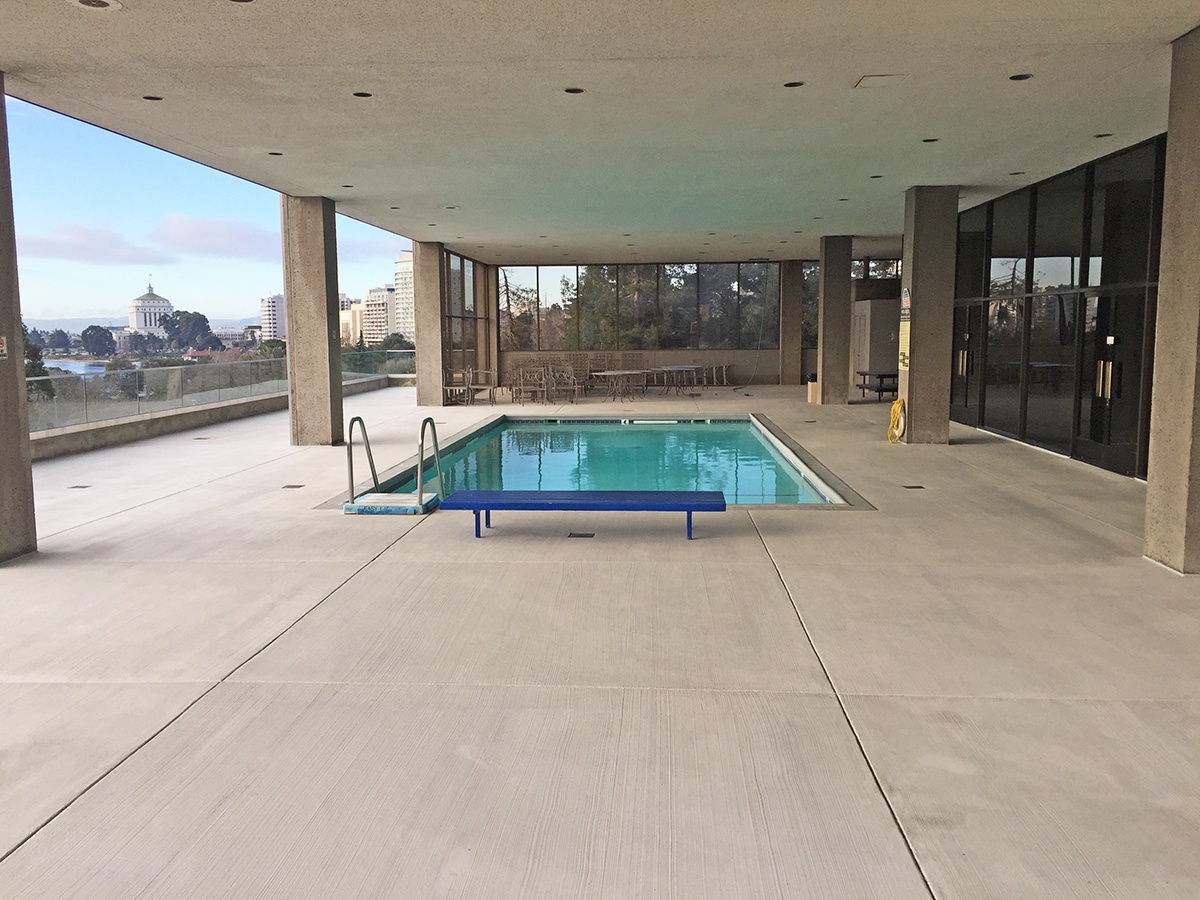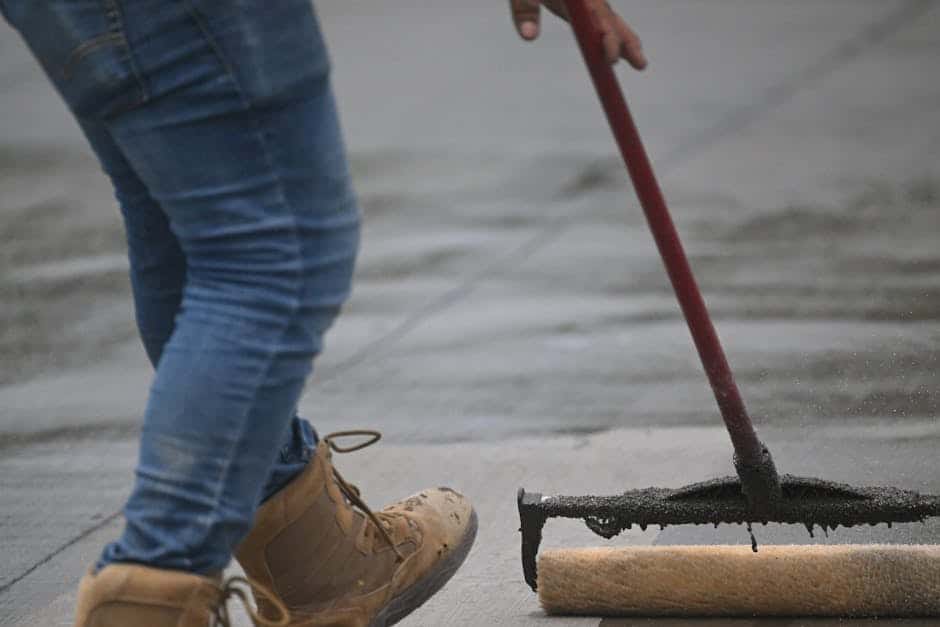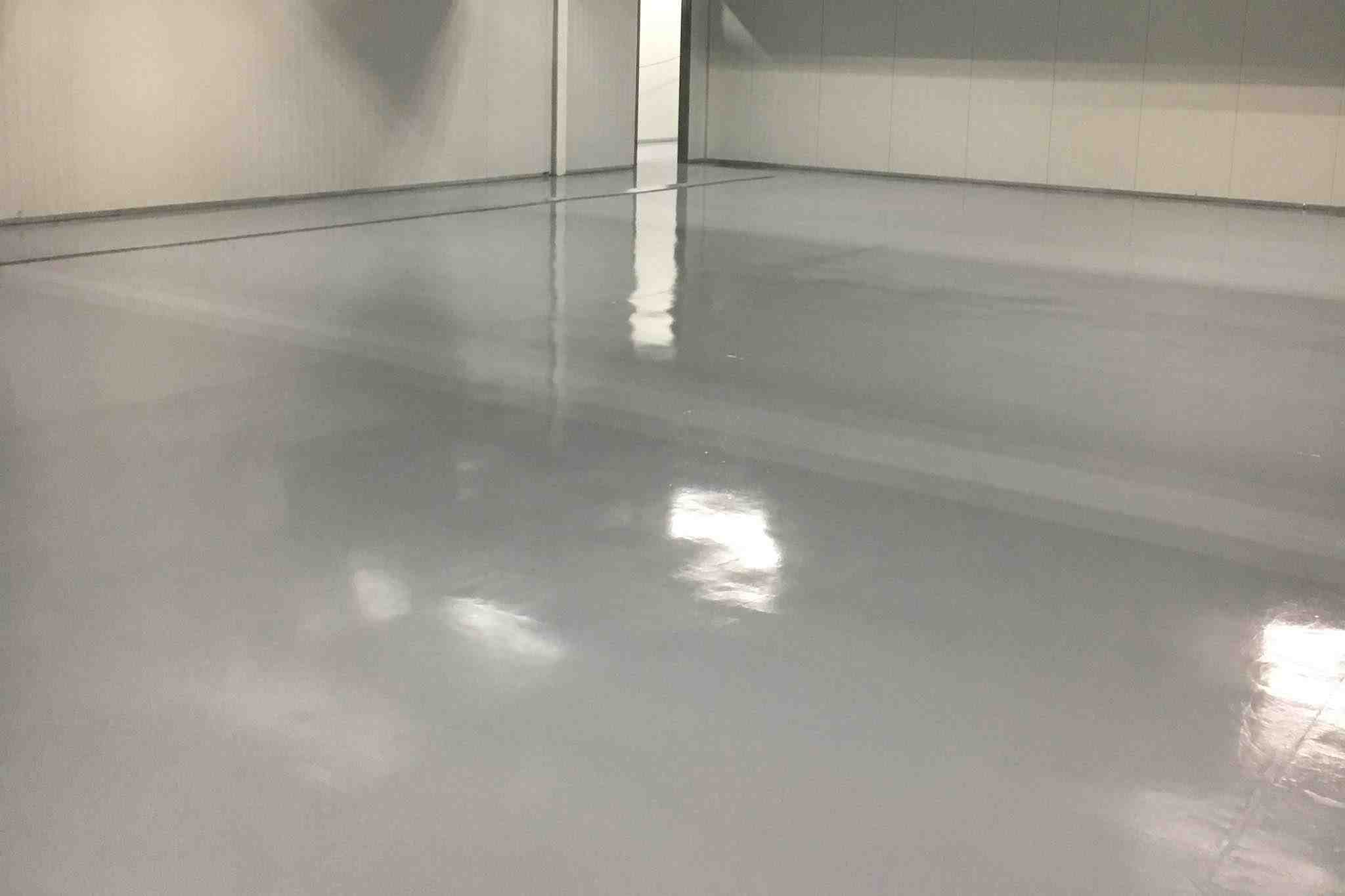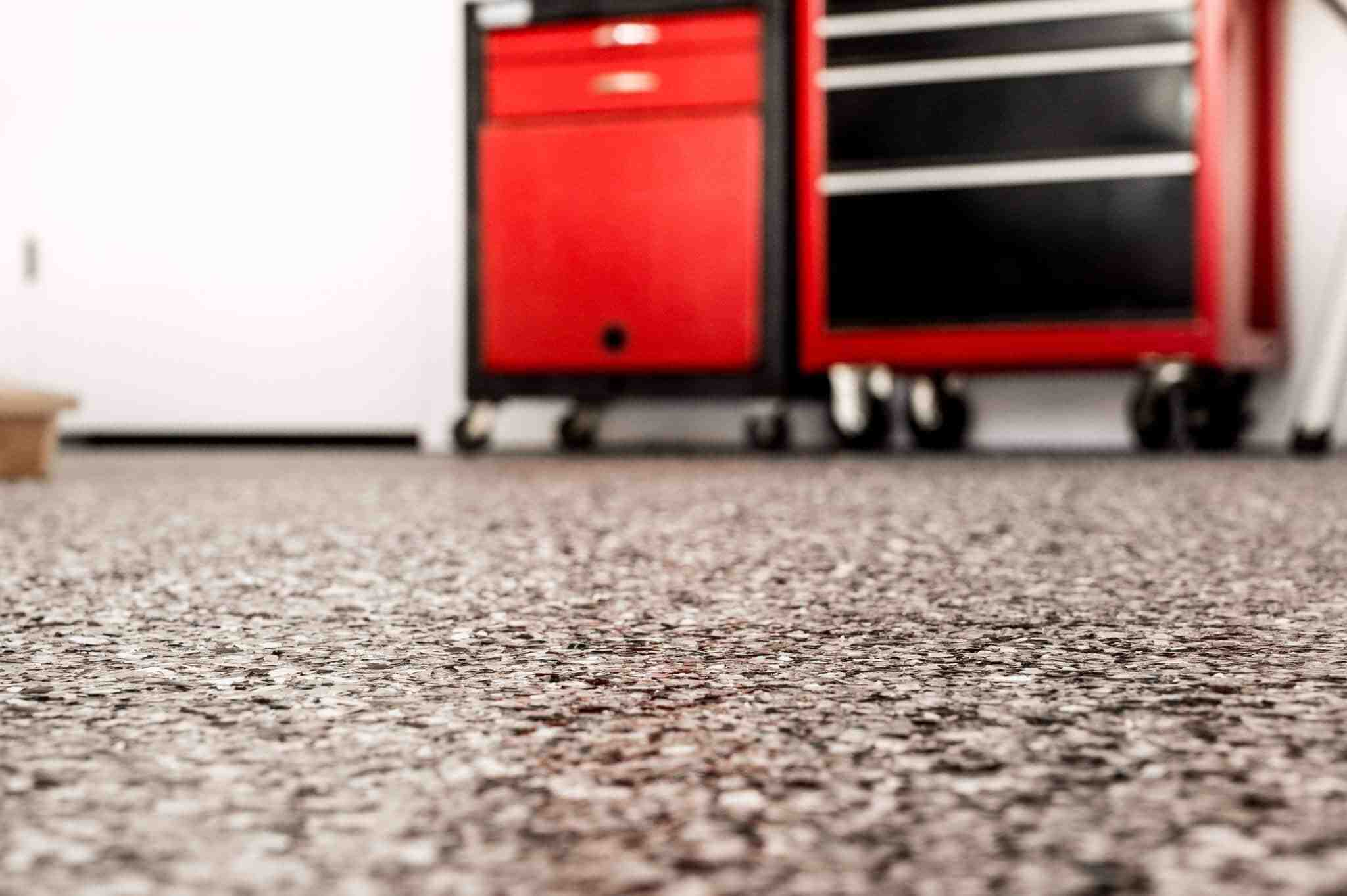Concrete might be tough, but bare concrete floors are vulnerable to staining, cracking, and long-term wear.
If you're researching coating options, you're likely left wondering: which of these concrete floor coatings will actually hold up under traffic, weather, and time?
This article breaks down the top concrete floor coatings and finishes available in 2025, including what makes them different, where they shine, and how to apply them properly for long-lasting results.
Whether you're a homeowner who wants to coat your garage floor or a facility manager looking to protect high-traffic commercial floors, you'll find exactly what you need to make a confident decision.
Quick Overview: What You Should Know About the Main Types of Concrete Floor Coatings
Choosing the right concrete floor coating depends on how you use the space, your aesthetic goals, and how much protection you need. Here's a quick breakdown of the most common options:
- Penetrating Sealers
Invisible treatments that soak into the concrete and protect it from within. Best for moisture resistance and light-duty protection without altering the look.
- Topical Sealers
Film-forming coatings like acrylics or polyurethanes that sit on the surface and provide gloss, stain resistance, and UV protection. Great for patios, basements, and decorative finishes.
- High-Performance Coatings
Industrial-grade systems like epoxy, quartz, polyurea, polyaspartic, and urethane cement. Ideal for everything from garages to industrial spaces where durability, chemical resistance, and longevity are required. Can be customized with color tinting or decorative flakes in certain applications.
- Specialty Coatings and Resurfacing
Flexible or resurfacing options like deck coatings and cementitious overlays. Designed to bridge cracks, waterproof surfaces, or restore stamped concrete or severely damaged concrete.
Concrete floor coatings transform plain concrete into a resilient and visually appealing surface. These coatings offer a range of benefits, including protection against heavy traffic, harsh chemicals, and environmental elements. This simple yet effective upgrade significantly increases the lifespan of floors while reducing maintenance efforts.
Floor coatings are not just for industrial or commercial settings. They are perfect for homes, garages, basements, patios, and more. The right coating can turn a bland, bare floor into an eye-catching, low-maintenance surface that’s built to last.
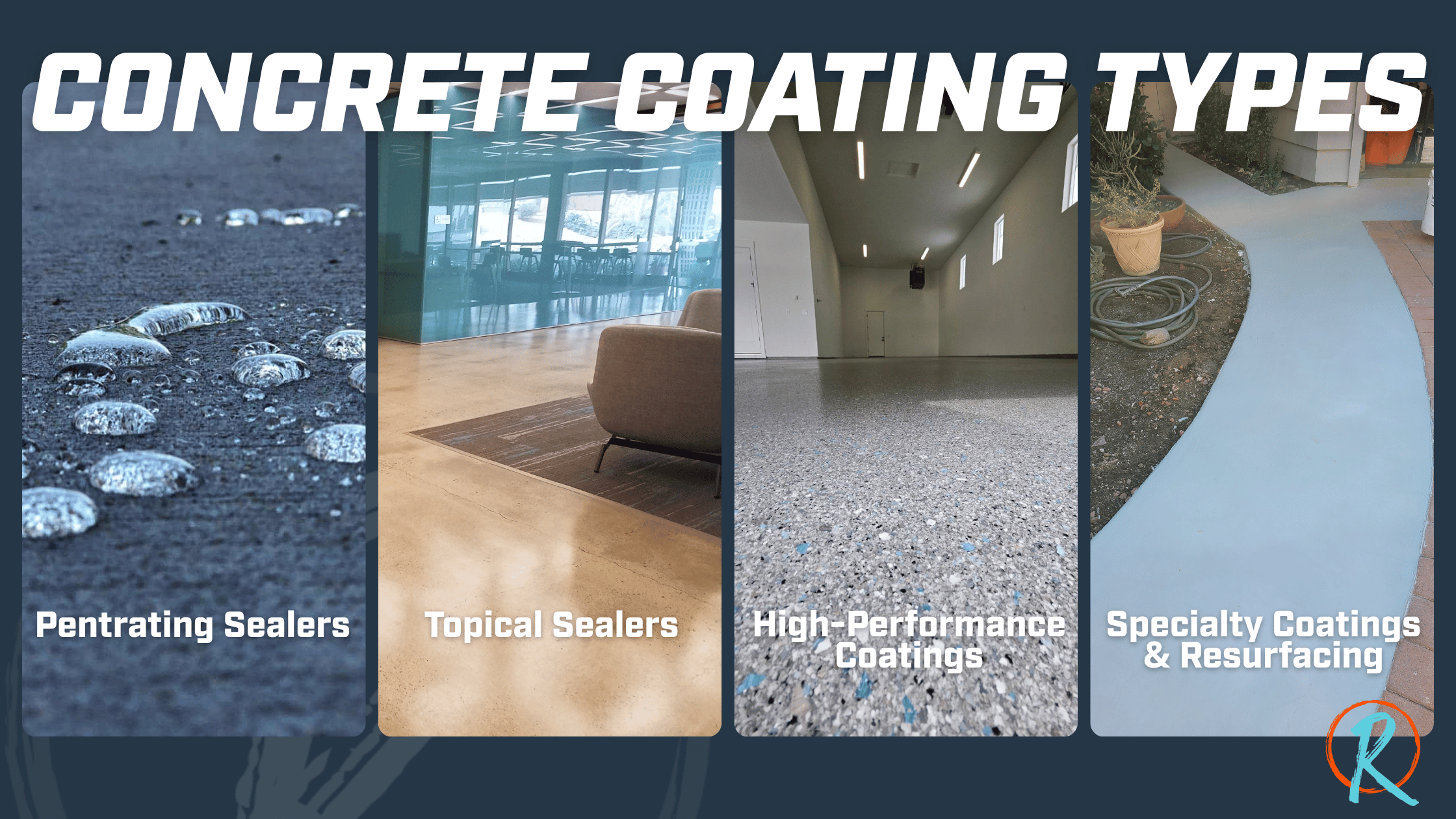
Types of Concrete Floor Coatings
Each type of concrete floor coating has different strengths, depending on how the floor will be used, your desired look, and long-term performance needs. Below, we break down the four main types of coatings used in residential, commercial, and industrial spaces.
Penetrating Sealers
What it is: These sealers soak into the concrete instead of forming a film on top. Common types include silicates (densifiers) and silane/siloxane blends (repellents)
Best for: Bare concrete surfaces where you want to reduce dust, moisture absorption, or surface degradation without changing the appearance. Great for areas where you want to use ice melt liberally without worrying about damage to the concrete.
Pros:
- Invisible finish
- Reduces water and salt penetration
- Low maintenance
- Great for driveways, walkways, and garages
Cons:
- Offers no gloss or color enhancement
- Limited stain or abrasion resistance
Ideal uses: Garage floors, warehouse slabs, driveways, storage areas, and moisture-prone basements where appearance is less important than performance.
Topical Sealers
What it is: These film-forming sealers—like acrylics and polyurethanes—sit on the surface of the concrete. They provide a visible finish and moderate protection. They are often combined with a grind and seal technique that gives concrete floors that smooth, glossy finish.
Best for: Indoor or light-duty outdoor spaces where aesthetics, UV resistance, and easier cleaning are priorities.
Pros:
- Enhances gloss and color
- Protects against UV damage and staining
- Easy to apply and recoat
- Available in water- and solvent-based formulas
Cons:
- Less durable than high-performance coatings
- Can become slippery if not textured
- May need more frequent reapplication
Ideal uses: Decorative patios, basement floors, and commercial showrooms with light traffic
High-Performance Coatings
What it is: Heavy-duty systems like epoxy, polyaspartic, polyurea, and urethane cement. Often combined in various systems with decorative additives (i.e., flakes, quartz, pigment).
Best for: High-traffic or high-impact environments that need superior durability, chemical resistance, and long-term performance.
Pros:
- Extremely durable and long-lasting
- Resistant to chemicals, abrasions, and impacts
- Decorative finishes available
- Some have faster cure times (polyurea/polyaspartic) and can give you a quick return-to-service
Cons:
- Requires professional installation and surface prep
- Can be more expensive upfront
- Varying cure time based on the products used
Ideal uses: Garage floors, warehouses, manufacturing plants, showrooms, retail spaces, restaurants, and fire stations.
Specialty Coatings & Resurfacing Systems
What it is: Coatings and overlay systems designed to solve specific problems like cracking, uneven slabs, or outdoor exposure. Includes deck coatings and cementitious resurfacing products.
Best for: Restoring damaged or aging concrete, including stamped concrete, pool decks, and deck coatings.
Pros:
- Bridges cracks and prevents water intrusion
- Can restore heavily worn or spalled surfaces
- Some systems are UV- and weather-resistant
- Can be textured for safety
Cons:
- Not all systems are DIY-friendly
- May require additional topcats or sealers
Ideal uses: Balconies, pool decks, patios, loading docks, and areas exposed to water, freeze/thaw cycles, or structural movement.
Coating Type
|
Finish/Appearance
|
Durability
|
Best Use Cases
|
| Penetrating Sealers |
Invisible / natural concrete look |
Moderate |
Garages, basements, driveways, industrial slabs |
| Topical Sealers |
Glossy or matte film |
Light to moderate |
Patios, basements, stamped concrete, pool decks |
| High-Performance Coatings |
Decorative flakes, quartz, metallic |
High |
Garages, warehouses, showrooms, kitchens, manufacturing floors |
| Specialty & Resurfacing Systems |
Textured or resurfaced overlay |
Varies (moderate–high) |
Pool decks, balconies, damaged or cracked surfaces |
Best Practices for Applying Coatings on Concrete Floors
Applying concrete floor coatings requires careful planning and execution to ensure a durable and aesthetically pleasing finish. Let’s dive into the best practices for surface preparation, application techniques, and curing times.
Surface Preparation
Proper surface preparation is crucial for the success of your floor coating. It ensures that the coating adheres well and lasts longer.
Cleaning: Start by removing all dirt, oil, and existing coatings. Use a high-pressure washer for thorough cleaning. For oily spots, a degreaser can be very effective. Grinding the concrete with professional equipment will be necessary for any professionally installed coatings and should only be completed by a professional installation company.
Moisture Testing: Moisture can hinder the adhesion of the coating. Use a moisture meter to check the floor. If the moisture level is too high, consider using a moisture barrier primer.
Crack Repair: In most cases, cracks and spalling concrete need to be repaired before the coating is applied.
Application Techniques
The right application technique ensures a smooth and even finish. Here are some common methods:
Roller: Rollers are ideal for most coatings. Use a medium-nap roller for epoxy and polyurethane coatings. Apply in W patterns to ensure even coverage.
Trowel: Trowels are used for thicker coatings and for creating decorative finishes. They require skill and practice to use effectively.
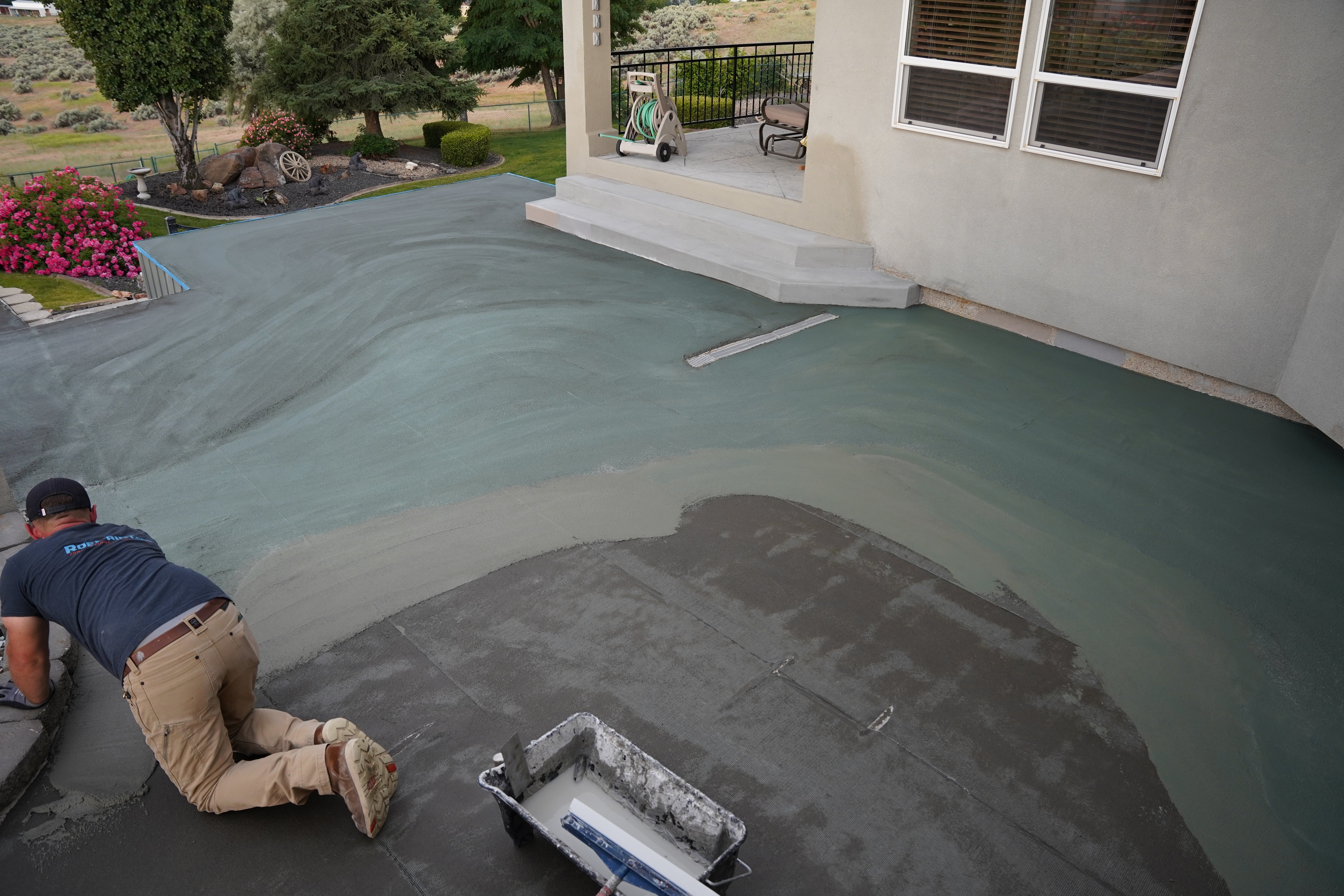
Curing and Drying Times
Different coatings have varying curing times, which are essential for the coating to set properly.
Epoxy: Epoxy coatings take about seven days to fully cure. During this time, keep the area free from traffic to ensure the coating sets correctly.
Polyurethane: These coatings cure faster than epoxy, often within 24-48 hours. They are also more flexible, making them ideal for areas with temperature fluctuations.
Polyaspartic: Polyaspartic coatings cure very quickly, sometimes within a few hours. They are perfect for projects that require a fast turnaround but require precise application due to their quick setting time.
Next, we will explore how these coatings enhance the durability and aesthetics of concrete floors, including protection against elements, maintenance tips, and aesthetic enhancements.
The Benefits of Concrete Floor Coatings
When it comes to coating concrete floors, the benefits extend beyond mere protection. They enhance durability, simplify maintenance, and boost aesthetics. Let’s dive into how these coatings can transform your concrete surfaces.
Protection Against Elements
Concrete floor coatings offer robust protection against various elements.
- Chemical Resistance: Certain epoxy coatings are highly resistant to chemicals like oils and cleaners. This makes them ideal for garages and industrial spaces where spills are common.
- Abrasion Resistance: Many coatings are known for their elasticity and abrasion resistance. They can absorb impact loads, making them perfect for high-traffic areas like shopping malls and hospitals.
- UV Stability: Polyaspartic coatings provide excellent UV resistance. This makes them suitable for outdoor applications, preventing the coating from yellowing or degrading under sunlight.
Maintenance Tips
Maintaining coated concrete floors is straightforward, but regular upkeep is essential for longevity.
- Cleaning: Most coatings are easy to clean. A simple mop or wipe-down can keep the surface looking new.
- Reapplication: Over time, some coatings may need reapplication. Acrylic coatings, for instance, might require a fresh layer due to their relatively lower durability.
- Inspection: Regularly inspect the coated surface for any signs of wear or damage. Early detection can prevent minor issues from becoming major problems.
Enhancing Aesthetics
Concrete floor coatings aren’t just functional; they also offer various aesthetic options.
- Color Options: Coatings come in a wide range of colors. Whether you prefer a sleek, modern look or something more vibrant, there’s a color to match.
- Textures: Different textures can be achieved with coatings. For example, adding flakes or colored quartz sand to epoxy can create a unique, decorative finish.
- Finishes: From high-gloss to matte, the finish of the coating can significantly impact the look of your floor. Polyurethane coatings, for instance, are available in glossy, semi-gloss, and matte finishes.
By considering these aspects, you can significantly enhance both the durability and aesthetics of your concrete floors.
Next, we will address some frequently asked questions about concrete floor coatings, including the best options and application methods.
Frequently Asked Questions about Concrete Floor Coatings
What is the best coating for concrete floors?
The best coating depends on your specific needs:
-
For garages, workshops, and industrial floors: A high-performance epoxy or polyaspartic system is usually the best choice. These coatings are extremely durable, chemical-resistant, and ideal for high-traffic or high-impact environments.
-
For outdoor surfaces like patios, driveways, or pool decks: You'll want a coating that resists UV rays and weather. Polyaspartic or deck coatings (like Westcoat's 11/10 system) are ideal here because they won't yellow in the sun and can handle temperature swings.
- For finished basements or decorative indoor floors: Indoor floors can perform and look stunning with everything from a simple grind and seal finish to decorative flake systems like epoxy or polyurea/polyaspartic. Coating type can reflect the style of the space.
- For damaged surfaces: If the concrete is decently damaged, look at products like NewCrete and MACoat for resurfacing solutions that not only restore the look of the concrete, but bring it back to full strength.
Still unsure? Check out our Ultimate Concrete Coating Guide that covers pricing, benefits, uses, and more for the most common concrete coatings on the market.
If your main goal is basic protection from moisture and dust, a penetrating or topical sealer may be enough. But if you want to improve durability, aesthetics, and chemical resistance, especially in high-traffic or garage environments, you'll want a full concrete floor coating system like epoxy or polyaspartic. Look for signs like staining, wear, or surface dusting as indicators that your floor may need more than sealing.
It depends on the type of coating and how the space is used. For example:
You came here to understand which concrete floor coating is right for your space, and now you know what coating will meet your needs. Whether you're working with a high-traffic garage, a decorative patio, or worn-down slab that needs resurfacing, there's a system designed to meet your needs.
Uncoated or poorly finished concrete floors are prone to cracking, wearing, and stains and cost more in long-term repairs. Choosing the right concrete coating protects your investment, improves safety, and transforms how your space looks and functions.
At Roe Painting, we've helped thousands of property owners, from homeowners to facility managers, get lasting results with professional surface prep and high-performance concrete floor finishes. If you need a trusted partner, we are here to help.





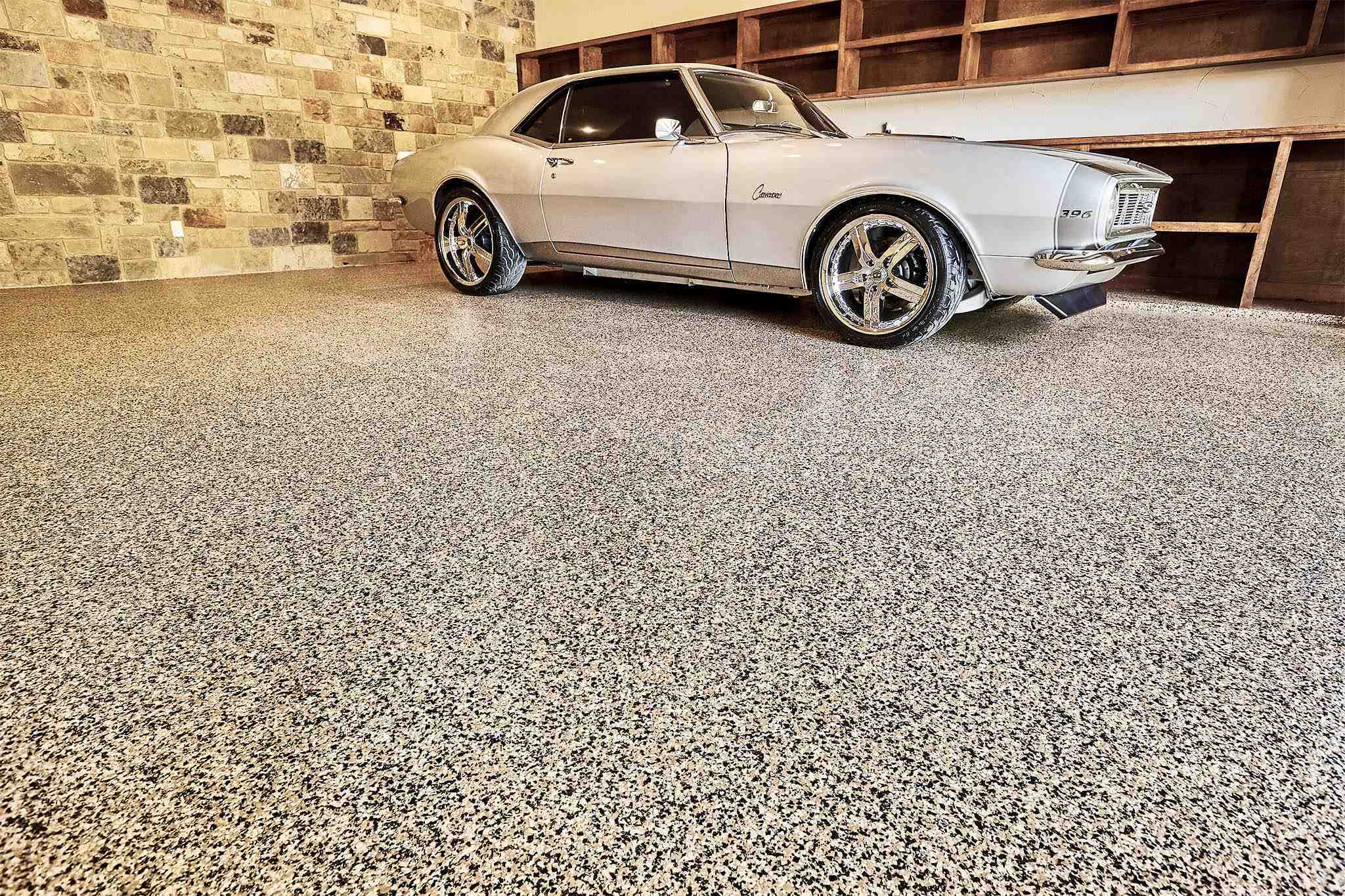
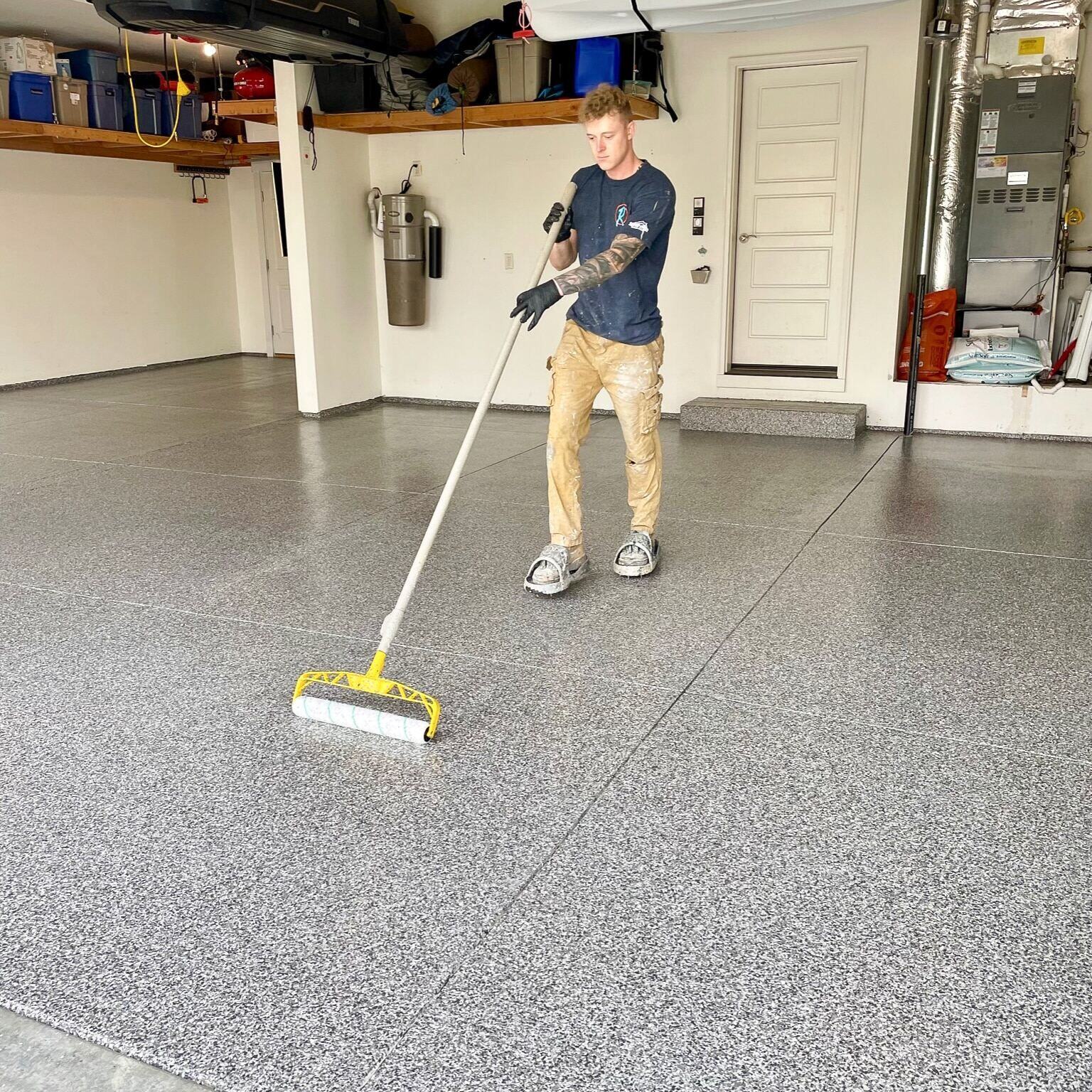
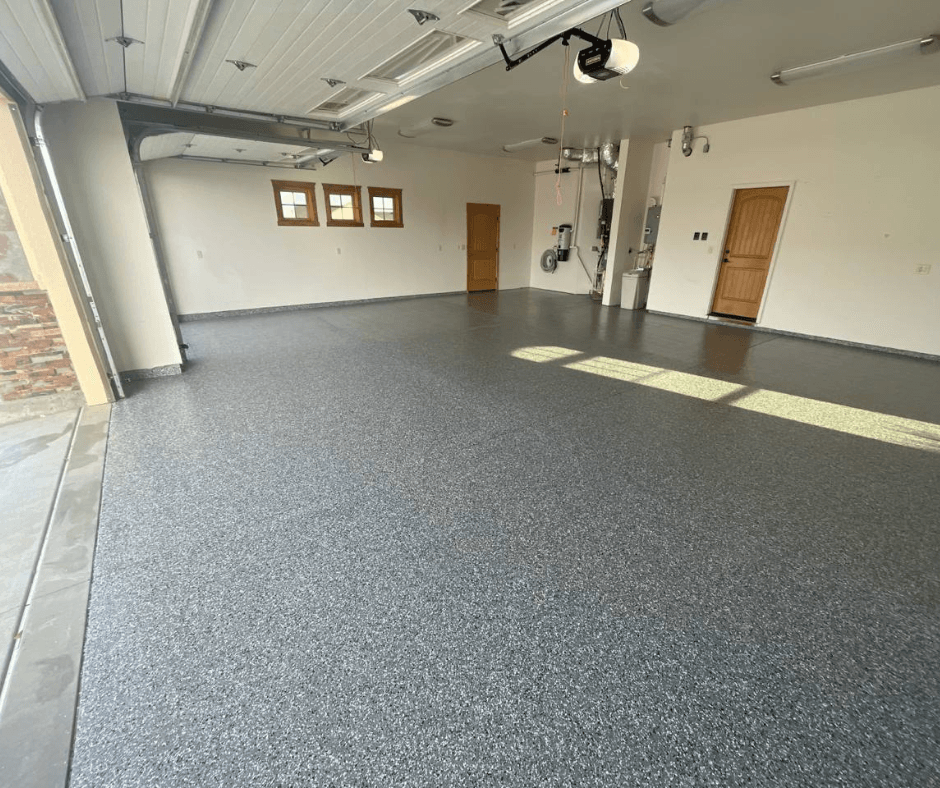
.jpg?width=750&height=1000&name=image001%20(1).jpg)
